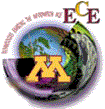|
|
Electrical and Computer Engineering Department |
||
|
Publications, News, Patents,
Talks |
Heterogeneous
Integration Laboratory (HIL) Enabling
~ Integration-Across-Length-Scales-&-Material-Boundaries Through ~ Printing-Transfer-&-Engineered-Self-Assembly Incorporating
~ Nanoparticle/wires-Microscopic-Dies&Chiplets
In
modern science and engineering, the borders between existing fields provide some
of the best opportunities for research. We focus on multidisciplinary,
exploratory research that deals with heterogeneous integration of
nanomaterials and devices across length scale and material boundaries. The
projects can be divided into two trust areas: Heterogeneous
Integration Across Length Scales Through Self-Assembly and Transfer (Trust 1) The first research trust is geared at developing engineered
self-assembly and nanotransfer methods to enable the integration of
functional (electronic and photonic) materials and devices into
heterogeneous systems. The goal is to overcome the scaling limitations
of robotic assembly lines and serial manufacturing. The team pioneered
techniques of self-assembly and transfer demonstrating a number of
different applications. We generally begin with the application and
reverse engineer a unique manufacturing process accordingly that we
license to interested companies. Our engineered self-assembly processes
use surface tension, shape recognition, hierarchies, receptors, and
binding site that can be programmed to direct the assembly (no pick and
place) as well as to from electrical interconnect between the disparate
elements (no wirebonder needed). Demonstrated applications include: Integration
and Characterization of Functional Nanomaterials and Devices (Trust 2) The second research trust follows a
similar theme but exclusively deals with nanomaterials that are formed by
bottom-up synthesis in our lab. The research is geared at the development
of novel techniques to enable the fabrication of future hybrid micro and
nanoscale systems which carry nanomaterial building blocks at exact
locations on a surface. The methods fall in the general area of patterning
and printing. Our earliest work dates back to the development of scanning
probe lithography methods to pattern surfaces on nanometer scale. Today
scanning probe allows fabricating prototypes of devices such as single
electron transistors. More recent research has focused on parallel
methods to pattern, print, or integrate nanomaterials with sub 100 nm
precision. |

